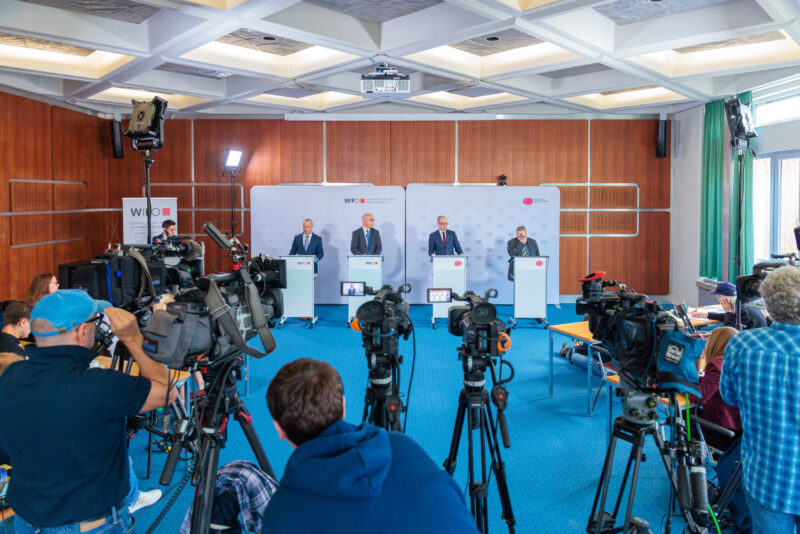
Konjunktur und Prognosen
Die Analyse und Prognose der Konjunktur ist eine Kernkompetenz des WIFO und bildet seit der Gründung des Institutes 1927 eine Säule der wissenschaftlichen Tätigkeit.
Aktuelle Kennzahlen zum Wirtschaftsgeschehen
Termine
Video: Prognose für 2025 bis 2027
18.12.2025
Livestream: Pressekonferenz am 18. Dezember 2025
17.12.2025
WWWI: 45. bis 48. Kalenderwoche 2025
16.12.2025
Ergebnisse des WIFO-Konjunkturtests vom November 2025
27.11.2025
WWWI: 40. bis 46. Kalenderwoche 2025
25.11.2025
WIFO-Konjunkturbericht vom November 2025
11.11.2025
Konjunkturreport Einzelhandel im Auftrag des Handelsverbandes
07.11.2025
Ergebnisse des WIFO-Konjunkturtests vom Oktober 2025
31.10.2025
Schnellschätzung des WIFO
30.10.2025
WWWI: 32. bis 41. Kalenderwoche 2025
21.10.2025
WIFO Research Brief liefert neue Detailergebnisse
10.10.2025
Video: Prognose für 2025 und 2026
07.10.2025
Ergebnisse des WIFO-Konjunkturtests vom September 2025
29.09.2025
Livestream: Pressekonferenz am 7. Oktober 2025
23.09.2025
WIFO-Konjunkturbericht vom September 2025
10.09.2025
Ergebnisse des WIFO-Konjunkturtests vom August 2025
28.08.2025
WWWI: 27. bis 33. Kalenderwoche 2025
26.08.2025
Konjunkturreport Einzelhandel im Auftrag des Handelsverbandes
22.08.2025
WIFO-Konjunkturbericht vom August 2025
11.08.2025
Ergebnisse des WIFO-Konjunkturtests vom Juli 2025
30.07.2025
Schnellschätzung des WIFO
30.07.2025
WWWI: 23. bis 28. Kalenderwoche 2025
22.07.2025
Untersuchung des Revisionsausmaßes von 2020 bis 2024
09.07.2025
Ergebnisse des WIFO-Konjunkturtests vom Juni 2025
27.06.2025
















